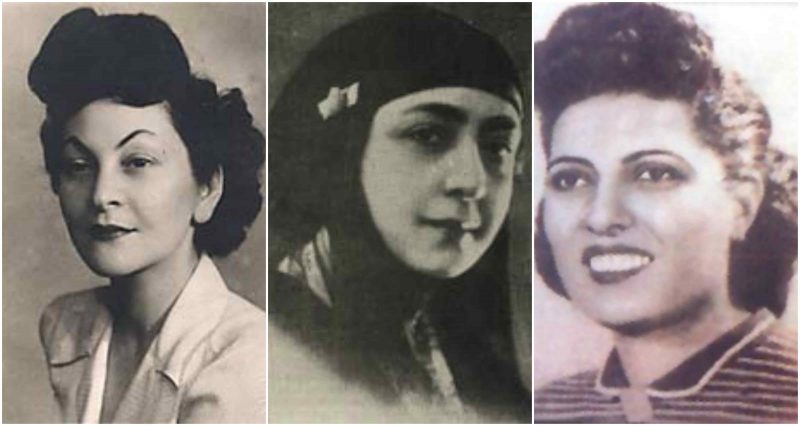How funny does it sound the phrase “it’s a man’s world” to Egyptian women when it is said by a Western woman? Women have their struggles all around the world, but still, when the oppression of women is a core ideology of a culture, it’s hard to even establish the phrase “Women’s rights” – let alone fight for it.
And yet, there is a long list of brave women who simply did it in their own way, they left eternal marks in the Egyptian culture and social life.
Huda Sha’arawi
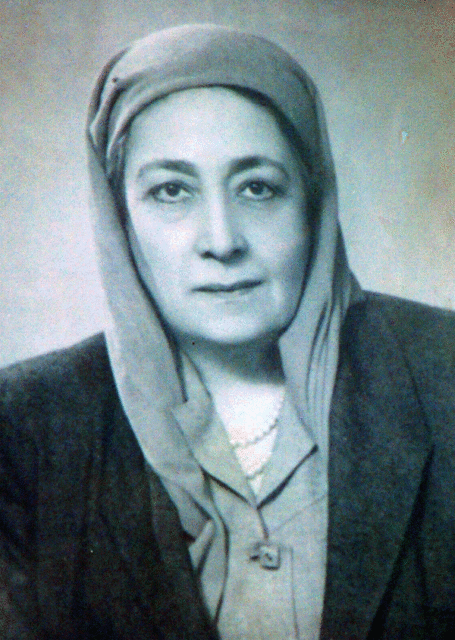
Born in 1879, Huda Sha’arawi was a pioneering Egyptian feminist leader, nationalist, and founder of the Egyptian Feminist Union. At the time, women in Egypt were confined to the house or harem. As seen in all of her pictures, Hude is wearing a Hijab. Sha`arawi resented such restrictions on women’s movements and started organizing lectures for women on topics of interest to them. This brought many women out of their homes and into public places for the first time. Sha`arawi even convinced them to help her establish a women’s welfare society to raise money for the poor women of Egypt. In 1910, Sha`arawi opened a school for girls where she focused on teaching academic subjects rather than practical skills such as midwifery.
After World War I, many women took part in political actions against the British rule. In 1919, Sha`arawi helped organize the largest women’s anti-British demonstration. In defiance of British orders to disperse, the women remained still for three hours in the hot sun. Sha`arawi made a decision to stop wearing her veil in public after her husband’s death in 1922
She led Egyptian women pickets at the opening of Parliament in January 1924 and submitted a list of nationalist and feminist demands, which were ignored by the Wafdist government, whereupon she resigned from the Wafdist Women’s Central Committee. She continued to lead the Egyptian Feminist Union until her death, publishing the feminist magazine l’Egyptienne (and el-Masreyya), and representing Egypt at women’s congresses in numerous European cities. She advocated peace and disarmament. Even if only some of her demands were met during her lifetime, she laid the groundwork for later gains by Egyptian women and remains the symbolic standard-bearer for their liberation movement. She began to hold regular meetings for women at her home, and from this, the Egyptian Feminist Union was born. She launched a fortnightly journal, L’Égyptienne in 1925, in order to publicize the cause.
Umm Kulthum
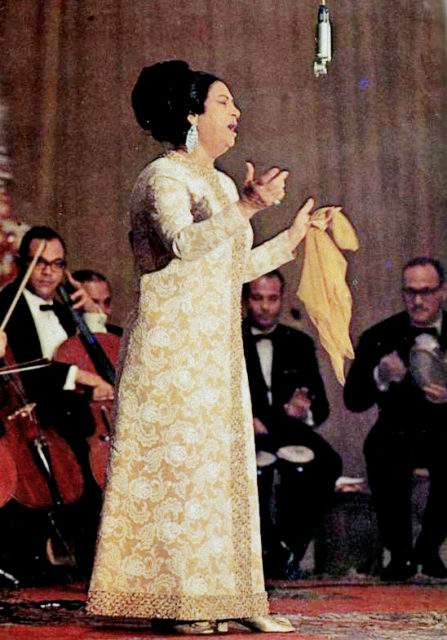
Umm Kulthum was an Egyptian singer, who mesmerized Arab audiences from the Persian Gulf to Morocco for half a century. She was one of the most famous Arab singers and public personalities in the 20th century.
Beginning in 1937, she regularly gave a performance on the first Thursday (which in most Islamic countries is the last day of the workweek) of every month. By this time she had moved from singing religious songs to performing popular tunes — often in the colloquial dialect and accompanied by a small traditional orchestra — and she became known for her emotive, passionate renditions of arrangements by the best composers, poets, and songwriters of the day. These included the poets Aḥmad Shawqī and Bayrām al-Tūnisī (who wrote many of the singer’s colloquial Egyptian songs) and, later, the noted composer Muḥammad ʿAbd al-Wahhāb, with whom she collaborated on ten songs.
Known sometimes as Kawkab al-Sharq (“Star of the East”), Umm Kulthūm had an immense repertoire, which included religious, sentimental, and nationalistic songs. In the midst of the turmoil created by two world wars, the Great Depression of the 1930s, and the 1952 Egyptian revolution, she cultivated a public persona as a patriotic Egyptian and a devout Muslim. She sang songs in support of Egyptian independence and in the 1950s sang many songs in support of Egyptian leader Gamal Abdel Nasser, with whom she developed a close friendship.
She remained one of the Arab world’s best-selling singers even decades after her death. In 2001 the Egyptian government established the Kawkab al-Sharq Museum in Cairo to celebrate the singer’s life and accomplishments.
Durriya Shafiq
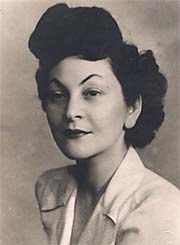
Doria Shafik was a feminist, philosopher, poet and editor, and one of the principal leaders of the women’s liberation movement in Egypt in the mid-1940s. As a direct result of her efforts, Egyptian women were granted the right to vote by the Egyptian constitution.
Shafik was born in Tanta, in the Nile Delta and studied in a French mission school. At sixteen she became the youngest Egyptian to earn the French Baccalaureate degree. At nineteen she was awarded a scholarship by the Egyptian Ministry of Education to study at the Sorbonne University in Paris. She also studied for a Ph.D. in philosophy at the Sorbonne. Upon her return from France to Egypt in 1940, Shafik hoped to contribute to the education of her country’s youth, but the dean of the Faculty of Literature of Cairo University denied her a teaching position on the pretext that she was “too modern.”
In 1945, Princess Chevicar, (the first wife of Egypt’s then former King Fuad I offered Shafik the position of editor-in-chief of La Femme Nouvelle, a French cultural and literary magazine addressing the country’s elite. Shafik accepted the position, and with Chevicar’s death in 1947, took complete responsibility for the magazine including its financing. Under her direction, La Femme Nouvelle gained regional status.
In 1948 Shafik created the Bint Al Nil Union, to help solve women’s primary social problems and to ensure their inclusion in their country’s policies. The union also worked to eradicate illiteracy by setting up centers for that purpose throughout the country, set up an employment office and a cafeteria for working women.
As a result of Shafik’s efforts women are granted the right to vote under the constitution of 1956 with the condition however that they be literate which was not a prerequisite for male voting.
Sameera Moussa
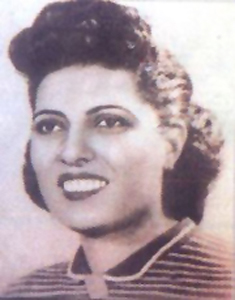
Sameera Moussa was an Egyptian nuclear physicist who held a doctorate in atomic radiation and worked to make the medical use of nuclear technology affordable to all. She organized the Atomic Energy for Peace Conference and sponsored a call for setting an international conference under the banner “Atoms for Peace”.
Despite the fact that Moussa got high grades in her secondary education, and could have gotten into engineering, she insisted on joining the Faculty of Sciences at Cairo University. In 1939, Moussa obtained a BSc in Radiology with first class honors after researching the effects of X-ray radiation on various materials. Dr. Moustafa Mousharafa, the first dean of the faculty, believed in his student enough to help her become a remarkable lecturer at the faculty. Afterward, she became the first assistant professor at the same faculty and the first woman to hold a university post, being the first who obtained a Ph.D. in atomic radiation.
Moussa believed in “Atoms for Peace” and said, “I’ll make nuclear treatment as available and as cheap as Aspirin.” She worked hard for this purpose and throughout her intensive research, she came up with a historic equation that would help break the atoms of cheap metals such as copper, paving the way for a cheap nuclear bomb.
On August 5, 1952, after her first visit to America she intended to return home, but she was invited on a trip. On the way, the car fell from a height of 40 feet, which killed her immediately. The mystery of the accident, since the invitation to California was shown to be untrue later on, besides the vanishing of the car driver who jumped from the car just before it rushed down, made some people believe it was a planned assassination. It is alleged that the Israeli Mossad was behind Moussa’s murder by a Judeo-Egyptian actress, Raqya Ibrahim (Rachael Abraham).
Nawal El Saadawi
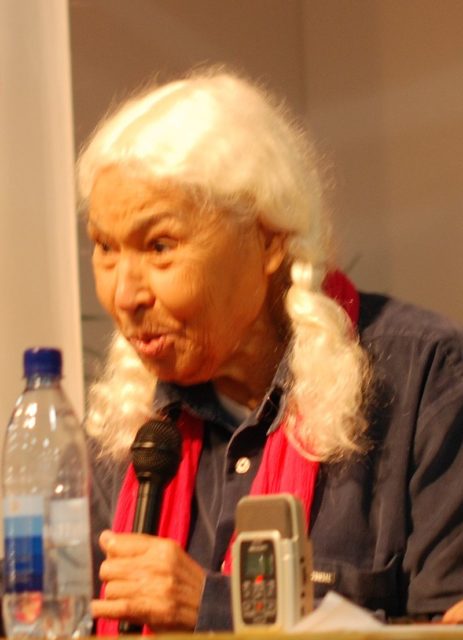
Nawal El Saadawi is an Egyptian feminist writer, activist, physician and psychiatrist. She has written many books on the subject of women in Islam, paying particular attention to the practice of female genital mutilation in her society. She has been described as “the Simone de Beauvoir of the Arab World”. She is founder and president of the Arab Women’s Solidarity Association and co-founder of the Arab Association for Human Rights. She has been awarded honorary degrees on three continents.
Nawal el Saadawi has held positions of Author for the Supreme Council for Arts and Social Sciences, Cairo; Director General of the Health Education Department, Ministry of Health, Cairo, Secretary General of Medical Association, Cairo, Egypt, and Medical Doctor, University Hospital and Ministry of Health. She is the founder of Health Education Association and the Egyptian Women Writer’s Association; she was Chief Editor of Health Magazine in Cairo, Egypt and Editor of Medical Association Magazine.
Saadawi graduated as a medical doctor in 1955 from Cairo University. In 1972 she published Woman and Sex, confronting and contextualizing various aggressions perpetrated against women’s bodies, including female circumcision. The book became a foundational text of second-wave feminism. As a consequence of the book and her political activities, Saadawi was dismissed from her position at the Ministry of Health. Long viewed as controversial and dangerous by the Egyptian government, Saadawi helped publish a feminist magazine in 1981 called Confrontation. She was imprisoned in September by President of Egypt Anwar Sadat. She was released later that year, one month after the President’s assassination. Of her experience, she wrote: “Danger has been a part of my life ever since I picked up a pen and wrote. Nothing is more perilous than truth in a world that lies.”
